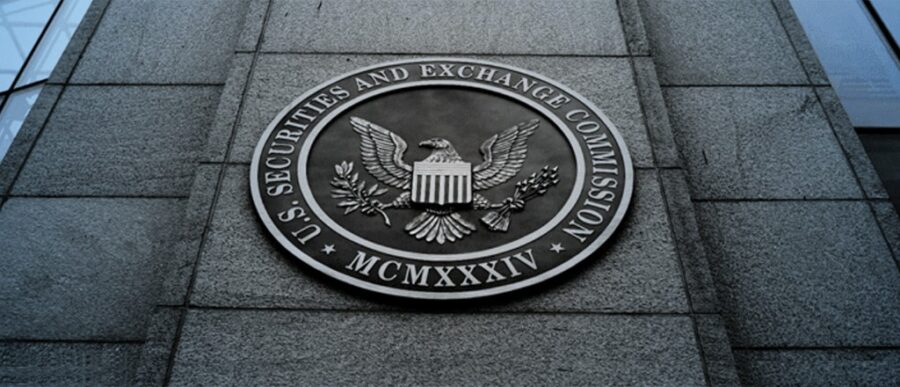Turned away by the Supreme Court in its efforts to recover ill-gotten monies from two hedge fund executives, the Securities and Exchange Commission (SEC) is knocking on the doors of Congress to change the law in its favor. The SEC was restrained from collecting those monies because of a rule that in some cases prevents it from going after fraudsters beyond five years after the offense is committed. Now, it wants that rule overturned. According to experts at Wharton and elsewhere, the SEC may have a strong case because the so-called “five-year statute of limitations” could let powerful and sophisticated fraudsters get away, while trapping smaller racketeers.
At the heart of the SEC’s complaint is the so-called Kokesh case, named for Charles Kokesh, an owner of investment advisory firms whom the regulator went after for allegedly defrauding retail investors of some $35 million. The SEC had sought $34.9 million from Kokesh as “disgorgement,” or a return of gains he made through illegal or unethical means, but in a June 2017 ruling, the Supreme Court rejected a part of it – $29.9 million – saying that more than five years had passed since that had been misappropriated.
Last month, the U.S. District Court for the Eastern District of New York upheld the June 2017 Supreme Court ruling, which the SEC had appealed against. The SEC had wanted to strengthen its position in a January 2017 case where it had accused two executives of Och-Ziff Capital Management Group of being “the driving forces behind a far-reaching bribery scheme that violated the Foreign Corrupt Practices Act.” It said they had steered “tens of millions of dollars in bribes” to high-level government officials in Africa, including Chad, Niger, Guinea and the Democratic Republic of the Congo, in exchange for investments in Libya’s sovereign fund and mining deals.
But SEC chairman Jay Clayton isn’t giving up. He recently told Congress that he wants to work with it “to address this issue to ensure defrauded retail investors can get their investment dollars back.” In a testimony before the House of Representatives on June 21, he complained that the Kokesh decision “has impacted our ability to return funds fraudulently taken from Main Street investors.” He agreed that regulators must act swiftly, but also said the statute of limitations is not always fair to retail investors. “If the fraud is well-concealed and stretches beyond the five-year limitations period applicable to penalties, it is likely that we will not have the ability to recover funds invested by our retail investors more than five years ago,” he added.
Striking a Balance
Urska Velikonja, professor at the Georgetown University Law School, said she wasn’t surprised by the Supreme Court’s ruling in the Kokesh case. The five-year window for the statute of limitations usually begins from the moment the last of the violations occur, she noted, and not from when they are discovered. In fraud cases, a shorter, two-year statute of limitations applies, and that begins from the time the violation is revealed, she added.
“It’s a balance that’s struck because when there’s a winner – in this case, a violator that goes free – there’s also a loser – the victim who doesn’t recover their funds.” –Urska Velikonja
The statute seeks to achieve “a balance,” Velikonja said. She noted that while the statute does not apply to some crimes like murders, it is applied “for crimes that are seen as lesser violations.” That distinction is made for two reasons. “One is evidence goes stale over time,” she said. “The likelihood that some testimony is going to be less accurate increases as time passes.”
Secondly, with the statute of limitations in place, “the violators – the people who are going on about their life perhaps not even knowing that they broke the law – will have some assurance after a certain period of time that they’re not going to get prosecuted by … a politically motivated government for something they did 20 years ago…. But it’s a balance that’s struck, because when there’s a winner – in this case, a violator that goes free – there’s also a loser – the victim who doesn’t recover their funds.”
Velikonja made her comments during a recent segment on the Knowledge at Wharton show on Wharton Business Radio on Sirius XM. She was joined in the discussion by Wharton professor of legal studies and business ethics David Zaring and Joshua Mitts, an associate professor at Columbia Law School. (Listen to the podcast at the top of this page.)
The Case for Compensating Victims
During the show, Zaring noted that in the Kokesh case, investors had been bilked over the course of some 15 years – similar to Bernard Madoff and his “extremely long-running Ponzi scheme.” He agreed with Velikonja that “there are good reasons at some point to let sleeping dogs lie and move on.” But he also pointed to the opposite argument. “Some people would say that for these big, bad people who have engaged in a really complicated and comprehensive fraud scheme over a number of years, wouldn’t it be great if we could go back – not just five years, but to the point where the fraud began – and compensate everybody who lost money from the fraud throughout the duration of the scheme?”
“The case that Clayton is going to make to Congress, which is a compelling one, is that you can’t have it both ways,” said Joshua Mitts, associate professor at Columbia Law School. “We’re trading off the benefits of putting old stories behind us against the resources that are made available to the division of enforcement,” which has not seen its budget increase the last five to 10 years, he noted. “They haven’t been adding many new attorneys. And at the same time, you know the complexity of financial fraud has been exploding. There either needs to be more resources given to the division of enforcement so that they can pursue these cases within the five-year limit, or we need a longer limit.” He thought that was “a very reasonable position to take…. It really puts the ball back in Congress’s court to decide – either pay up or change the law.”
“It is the more sophisticated and sneakier of the wrongdoers who benefit most from the strict five-year statute of limitations.” –David Zaring
Clayton could refine his argument by differentiating between the Kokesh case and other Ponzi schemes, said Velikonja. The long-lasting and large Ponzi schemes such as those that Madoff or Allen Stanford ran would be among those affected by the Kokesh ruling. “But the nickel-and-dime Ponzi schemes are the ones where you see some [person] on Long Island defrauding his grandmother and other grandmothers like his,” she noted. “Those tend to be caught relatively quickly.”
According to Velikonja, other violations that regulators are able to track down include insider trading and pump-and-dump schemes, where people build a position in a stock and pump up its price with false recommendations, and then sell their holdings at a profit. The bigger and more complex frauds might involve a Wall Street broker-dealer firm defrauding a municipality in its bond offering, or bribery in foreign countries, she added.
Zaring said the SEC could also make the argument that “it is the more sophisticated and sneakier of the wrongdoers who benefit most from the strict five-year statute of limitations.” A change in the statute would allow it “to go after the headline-grabbing, high-profile, worst-of-the-worst” offenders.
“Many times, the victims of frauds are individual investors, charities and so on,” Mitts noted. “There’s a sense that when real people are hurt, we should all do what we can in our power to make things right. I think that’s what’s driving the SEC here.”
Disgorgement Versus Penalty
Central to the latest district court ruling was the Supreme Court terming the SEC’s demand as a “penalty” and not a “disgorgement” – it said the latter is the term used when a violation is committed against the state, and not private individuals. “Disgorgement is a request that the SEC makes to effectively claw back the proceeds or profits from an illicit scheme worked upon the market from the beneficiaries of that fraud,” said Mitts.
“The five-year limit hasn’t caught up with technological change that allows us to go back in time and be much more certain about what happened.” –Joshua Mitts
“The disgorgement remedy is a tricky one for the courts to wrap their analytical minds around, because on the one hand it feels a lot like compensation, [or] bringing investors back to the place where they were before the fraud took place,” Mitts noted. “If that were the case, then the five-year statute of limitations would not apply because there’s a longer statute of limitations for compensatory relief.” The Supreme Court in the Kokesh case said that what the SEC sought as “disgorgement” was more than just restitution or compensation, but a penalty, he explained. What sealed the case against the SEC was that under the law, penalties are covered by the five-year statute of limitations.
Lower courts are dealing with a related challenge – whether the SEC’s injunctions against alleged offenders are also covered by the five-year statute of limitations, Velikonja noted. (An injunction is typically a restraining order or a warning to an individual or organization to stop doing something that may be illegal.) If the SEC were to lose out on that front as well, its hands would be tied in cases that tend to last “a very long time” as well as in cases that take “a long time to discover,” she said. The beneficiaries would be “the more sophisticated parties that are better able to disguise and conceal the wrongdoing that’s taking place as opposed to the more run-of-the-mill, nickel-and-dime misconduct,” she added.
Will the SEC Prevail?
Zaring said the SEC “is not looking for some dramatic expansion of its powers, but an extension of its disgorgement remedy.” Disgorgement happens to be an important issue for the agency and accounts for more than half of its revenue base (penalties make up the rest), he added. According to the SEC’s 2017 annual report, it ordered disgorgements totaling nearly $3 billion, while the penalties accounted for only $832 million.
“There’s a sense that when real people are hurt, we should all do what we can in our power to make things right.” –Joshua Mitts
Velikonja thought Clayton could make “a powerful argument” with Congress citing those two aspects: the restraints of the five-year statute of limitations in going after “bad guys who took money from grandmas, from their churches, from their investors,” and the fact that the SEC distributes to injured investors the bulk of the disgorgement that it collects from violators. Typically, it collects about half the disgorgement it orders. “The rest of the money has been spent on gambling, on cars and houses, and God knows what else,” she added.
The political mood now might be right to consider extending the statute of limitations more broadly, given the forthcoming elections to Congress, Mitts noted. Also, “there is less patience today with the idea that we’re going to sweep wrongdoing under the rock,” he suggested, citing the #MeToo movement as charging up that sentiment. “The five-year limit hasn’t caught up with technological change that allows us to go back in time and be much more certain about what happened.”
According to Velikonja, if the SEC does have its way with Congress, “its ability to seek higher remedies – if it so chooses – will improve somewhat.” She also thought that the SEC’s, “morale will [also] improve if it finally wins the Congressional battle, after it has lost several times in the Supreme Court.” Added Mitts: “It’s also important for investor confidence. This is a time when the SEC is trying to reassert itself and establish its role, and this might be a good place to do it.”


